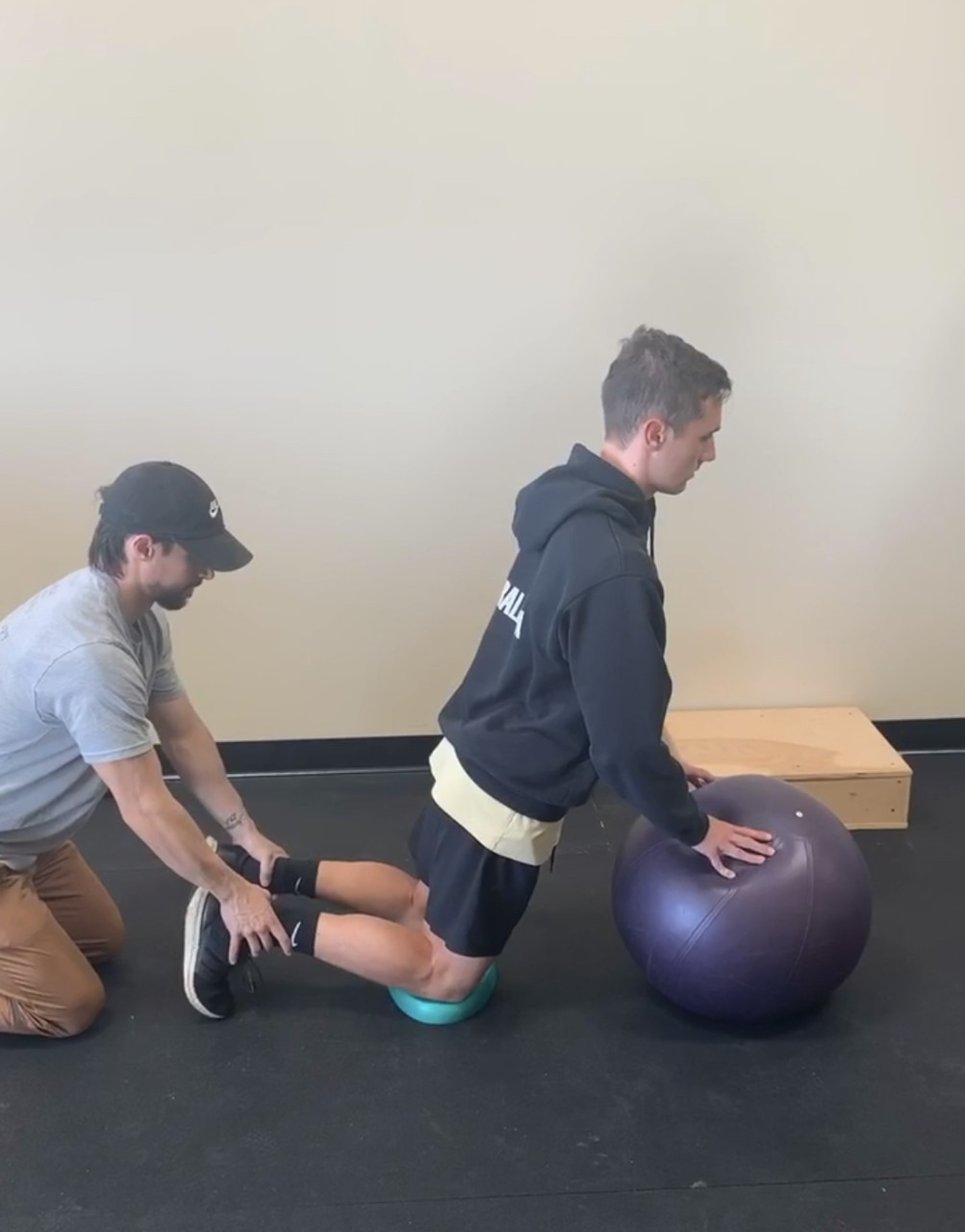Hamstring Injuries and the Best Exercise You're Not Doing For Them
As we are in the thick of the fall sports season, one of the most common injuries for athletes is a hamstring strain. Although how injuries occur are a multi-factorial event, there are exercises we can program to help reduce the likelihood of this injury by building resiliency, strength and mobility.
Hamstring Strains
First, let’s talk about what a “strain” is. A muscle strain is when a muscle, or musculotendinous junction has tears in the fibers. (This is in contrast to a “sprain,” which would involve ligamentous tissue damage; usually trauma). Symptoms include a sharp pain, weakness and sometimes even a “pop” sound with swelling and bruising not at all uncommon either. In terms of the hamstring, this can be from excessive lengthening (sliding, kicking, or dancing) or a lack of eccentric control and strength, like during a running stride for example. In some not as common cases, repetitious overload can cause inflammation of the hamstring tendon as well. They are usually graded on a severity scale of I-III.
Unfortunately, hamstring strains can involve lengthy time away from activities or sports season; depending on severity. Additionally, they have high likelihood of re-injury, with the most common time within two weeks of returning to play.
These facts show how important having a sound treatment and care plan are to try and prevent re-exacerbation!
Assessment and Treatment
Treatment of a hamstring strain involves assessment of the area, symptoms relief and progression of rehabilitation exercises as well as addressing possible mobility deficits. Imaging (ultrasound or MRI) can be helpful if readily available (pro sports or elite athletes), but is not absolutely needed.
As with most cases, the first few treatments is simply about managing symptoms. A wide array of services we offer can spur healing to eventually get to the bread and butter: proper rehab. These modalaties that help and create a healing response could include, but are not limited to: dry needling/acupuncture, IASTM (instrument assisted soft tissue manipulation), soft tissue work, cupping, kinesiotaping, etc.
To truly try to prevent injury long term though, we need to build the capacity of what the muscle can do. For the hamstrings, one of the best sports rehab exercises is undoubtedly the Nordic curl. It should be a staple of any care plan or training program for athletes due to the effectiveness shown in literature for reduction to injury. In fact, a systematic review and meta-analysis by the British Journal of Sports Medicine showed that across fifteen different sports, men and women and ages 18-40 this ONE exercise decreased hamstring injuries by up to 51%. That is truly remarkable!
This exercise’s effectiveness can largely be due to the fact that the forces applied are similar to the events at hand for athletic events: eccentric loading on the hamstring group. An eccentric contraction, or negatives, is the ability of the muscle to elongate and decelerate the joint. Lack of eccentric control is one of the most common injuries not only for hamstrings, but athletic events in general. When the force applied can not be resisted or stopped, the length of the muscle reaches its capacity and tears.
In closing: personal experience
I am personally biased to this exercise and the hamstring group in general due to tearing my own hamstring in college in track and field. I heard a "pop" behind my left leg going around the turn in outdoor championships during the 4x100m. This was not only disappointing for the fact that it was extremely painful, but I felt as though I let my team down since I didn't give my best time and performance. Yet, as I have gained more knowledge about programming and rehab in general, I have not had any hamstring issues. I credit part of that to this one exercise!
So if you currently suffer from chronic hamstring strains, come in and let’s start programming things better so it won’t hamper your performance going forward! We now have clinics on both East and West Wichita to better suit you and your sports injuries so there’s no excuse!
- References:
About the author
Dr. Sam Reals’ empathy for people in pain motivates him to learn the most up-to-date treatment standards and rehab protocols, encouraging patients to incorporate exercise long after their care plan has concluded. Dr. Sam Reals believes it is only through exercise that people can unlock their true potential and increase longevity to a happy, fulfilling life.
